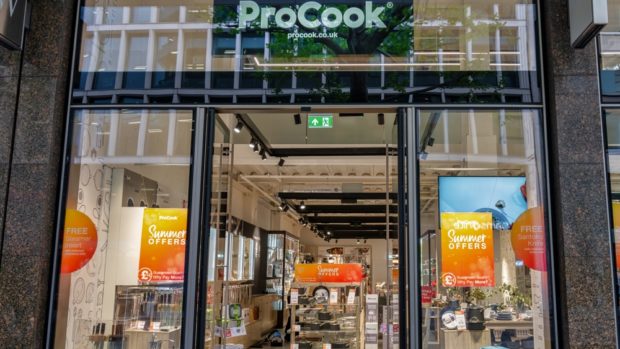Social media have fundamentally changed how retailers interact
with, market, and sell to customers. For many brands, it feels a
bit like losing control. It’s a risk, opening up direct
communication between a brand-that you’ve spent so much time
nurturing-and its customers. But the marketing director is
banging on about how important social media are, and that
effective marketing is “all about engagement”. So you
decide to try it; you set up a Facebook page and maybe a Twitter
account, assign someone inexpensive to man it, probably a
marketing junior, and see what happens.
Often, the answer is not a lot. If you don’t really know why you’re “doing” social media, the chances are your customers don’t either. No-one “likes” you on Facebook or follows you on Twitter. Sales are static. There’s no measurable return on investment, so you put an intern on the Twitter account, and leave your Facebook page to wither.
If any of this sounds familiar, you’re not alone. But social media, done well, can have an enormous impact on business. Just ask Dell, which famously created a $6.5 million sales channel through @DellOutlet on Twitter, offering exclusive deals to followers.
So before you worry about return levels, know what you’re trying to achieve. Social media shouldn’t be an afterthought to another campaign. Like any marketing activity, it must have clear objectives, proper implementation and management, and be measurable-its measurement should be in line with wider measurements of marketing effectiveness.
Is your objective to create engagement that in turn will create loyalty? Or to create brand awareness that will ultimately increase sales? Or customer interaction, for example, in a customer service function? Or are you using social media to monitor and manage your reputation? All these support existing business functions. If your goal is to use Twitter to support customer service, consider how you measure other service channels. Look at response rates, satisfaction scores and resolutions to customer queries. You can apply the same criteria to customer service over social media.
There are various research reports that focus on measuring social media. Forrester advises dividing social media ROI into four categories: financial metrics, digital metrics, brand metrics, and risk management. But note that there are more ways than direct financial metrics (spend one dollar and get four back in sales) to measure social-media activity as with marketing activity in general. Of course, all spend should ultimately have a positive impact on the bottom line, but it may not be possible to see it immediately. If a customer returns faulty goods and the retailer replaces them, it may not see an immediate gain from that action-the opposite, in fact-but, chances are, that customer will spend more with that retailer in the future. How do you measure that in financial terms? Better to measure criteria that you know improves performance, such as customer retention and loyalty.
Social media for research and development
The first, and arguably most important, thing that social media can achieve is the ability to listen to what your customers want, what the market is doing, and what the issues are facing your brand. This takes us back to our first point: that brands often find social media risky because they can’t control what’s being said about them. But conversations are happening, whether you get involved or not and, to be blunt, whether you like it or not. Conversations that used to happen in the pub, out of earshot, are now happening across social media. So retailers can listen in, learn and respond.
Smart retailers are using this to their competitive advantage. Brands like Asda are creating online communities to get customers involved in the research and development process, from collecting ideas to trialling new products. Most online retailers find that the majority of their sales are generated by a minority of customers. By involving some of those customers before a product is developed, you know you’re creating something they want, engendering loyalty, and reducing the chance that a product won’t sell, or will have a high return level. French Connection announced in August that it will use social media to let customers rate products and share reviews with each other. This feedback will be used to develop how French Connection sells to customers, and help it to understand what customers want from the retailer.
Of course, if you listen to what your customers are saying, you have to be prepared for the negative, as well as the positive. If a customer complains about your service and you hear that complaint on social media, you have an opportunity to put the problem right and prevent it happening again. If you don’t know about the problem, you can’t fix it.
How do you measure this? By getting customers involved in development, you are “seeding” the service and creating proof-of-concept before you launch a product. The measure of success will be whether you launch a successful product, or make an expensive mistake.
Social media for customer service
This is a relatively new, but fast growing, use of social media. Companies like BT ?(@btcare) and Microsoft (@micosofthelps) are good examples of companies using Twitter as a customer service channel. BT is widely acclaimed as being fast to respond to customer issues on Twitter, but it’s important to note that BT’s account is staffed by a customer service expert, who is authorised to take action, not a marketing intern. On a bigger scale, broadband provider Eircom has created an entire community called Eircom Connect to support its customer services. Customers will use social media to “self-serve”, help each other with common problems, or chat directly to a customer service representative online. This can take a significant burden off contact centres.
Over time, it’s possible to measure the ROI of social media supporting customer services. This can be done by considering criteria such as self-service (taking the burden off customer services), mass communication of service upgrades as opposed to the cost of individual communication, customer satisfaction measurement, repeat business improvement, and customer loyalty figures.
Sales
In some ways, sales, or other customer actions such as registrations, are the easiest to measure. I mentioned the Dell example earlier; it is important to note that the Dell sales channel on Twitter is one of many Dell Twitter accounts, each used for a specific purpose.
To measure how social-media channels are contributing to sales, use the same kind of campaign identifiers as you would for other campaigns, such as coupon codes, dedicated website landing pages, or special offers exclusive to that channel. This lets you very easily measure what’s working and what isn’t. Most retailers will know how much a sales lead is “worth”-for example, judged by what you pay for a cost-per-click lead in a search campaign-and many of these metrics can be applied to social media sales campaigns.
Monitoring reputation
Social media let brands see, in real time, what’s being said about them online. For many retailers, monitoring conversations online forms a key part of their issue-management strategy, as well as informing product development and marketing campaigns.
Importantly, using social media to monitor what people are saying about you lets you track what impact other marketing campaigns are having on your business. They let you track reputation change, whether good or bad, and take action as a result. Some services now can show how you can track what’s being said about a brand, and by whom, by measuring data such as customer satisfaction, noise level, details of influential authors and customers, mentions by platform, and a retailer’s reputation against competitors. This kind of analysis can be used to track reputation performance; analyse the impact of a particular online or offline campaign, or a product launch; or to provide a critical early warning system of a potential product issue that could affect the retailer’s reputation.
So, can you ?measure ROI?
The effectiveness of social media activity and its measurement relies on how robust your objectives were in the first place. Whether you can measure ROI depends, ultimately, on whether you can track back customer action to social-media activity, as with any other marketing. This, in turn, depends on what action you want your customers to take as a result of your social-media activity, how you measure the financial impact and the tools you put in place to do so.
Steve Richards is managing director of social-media agency Yomego.








Share